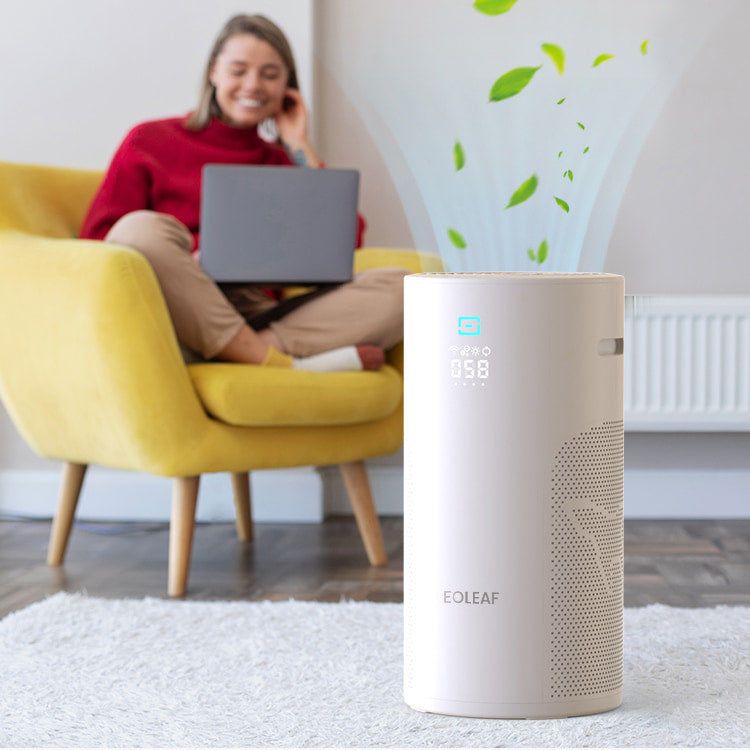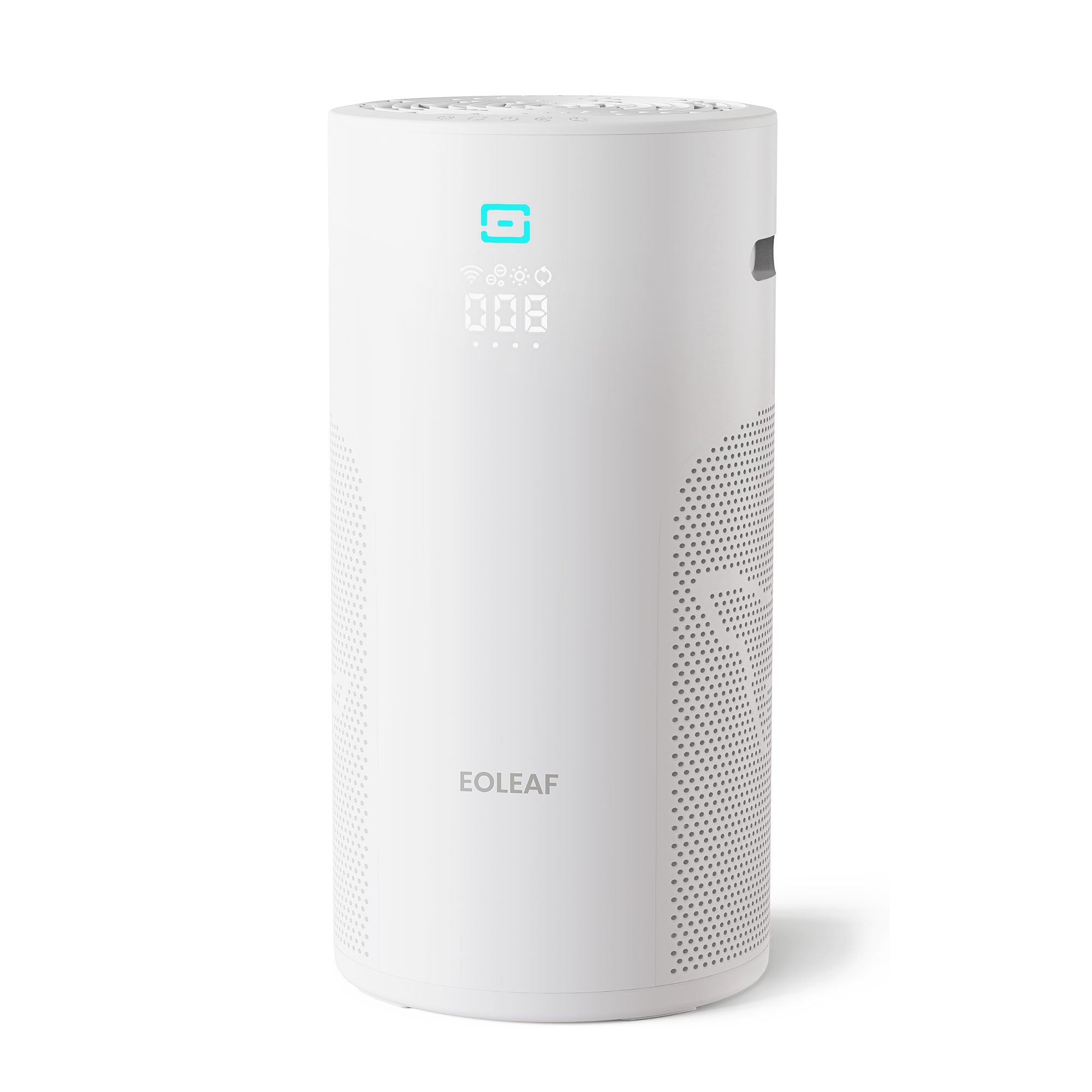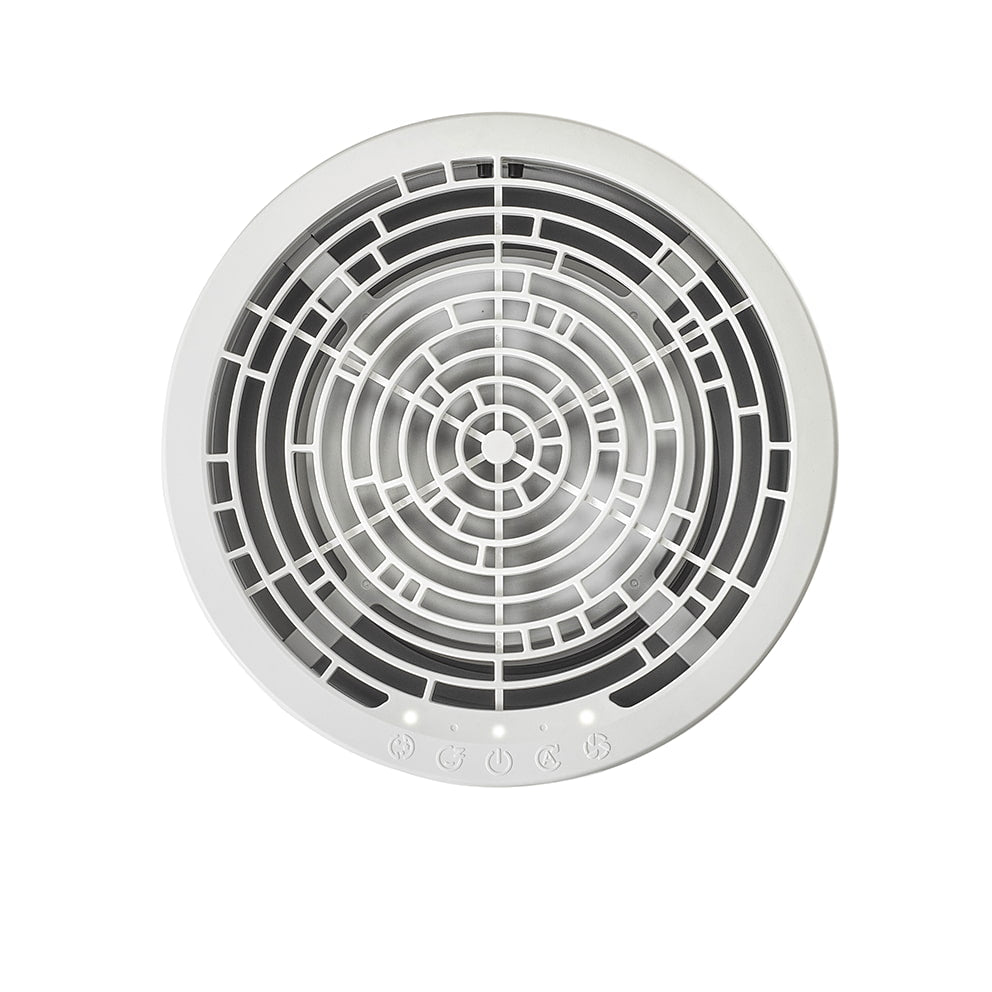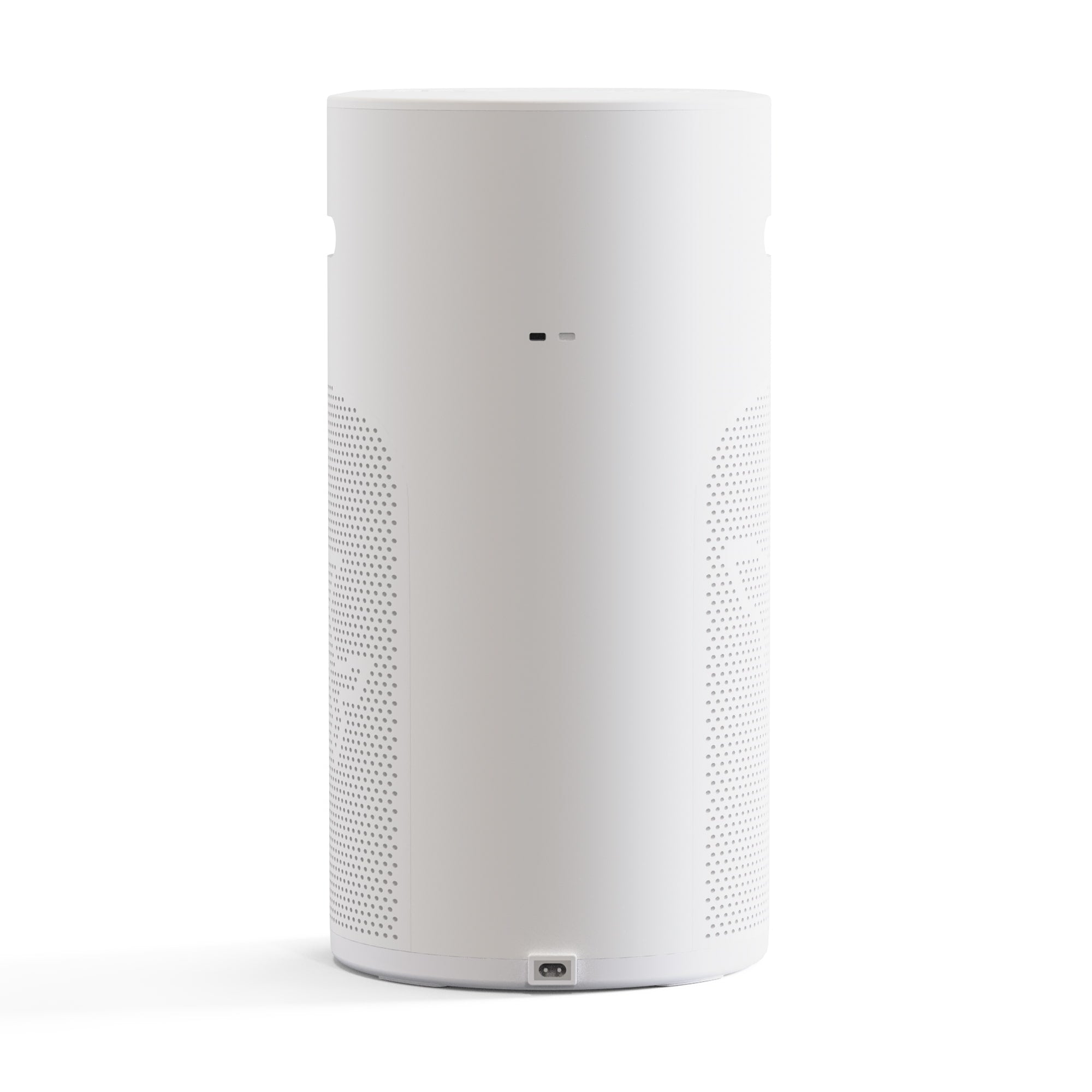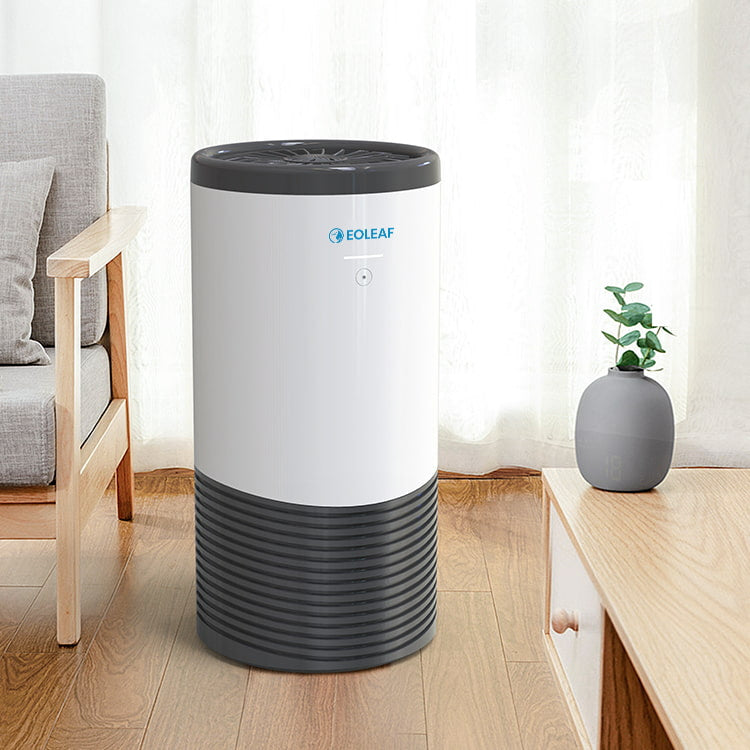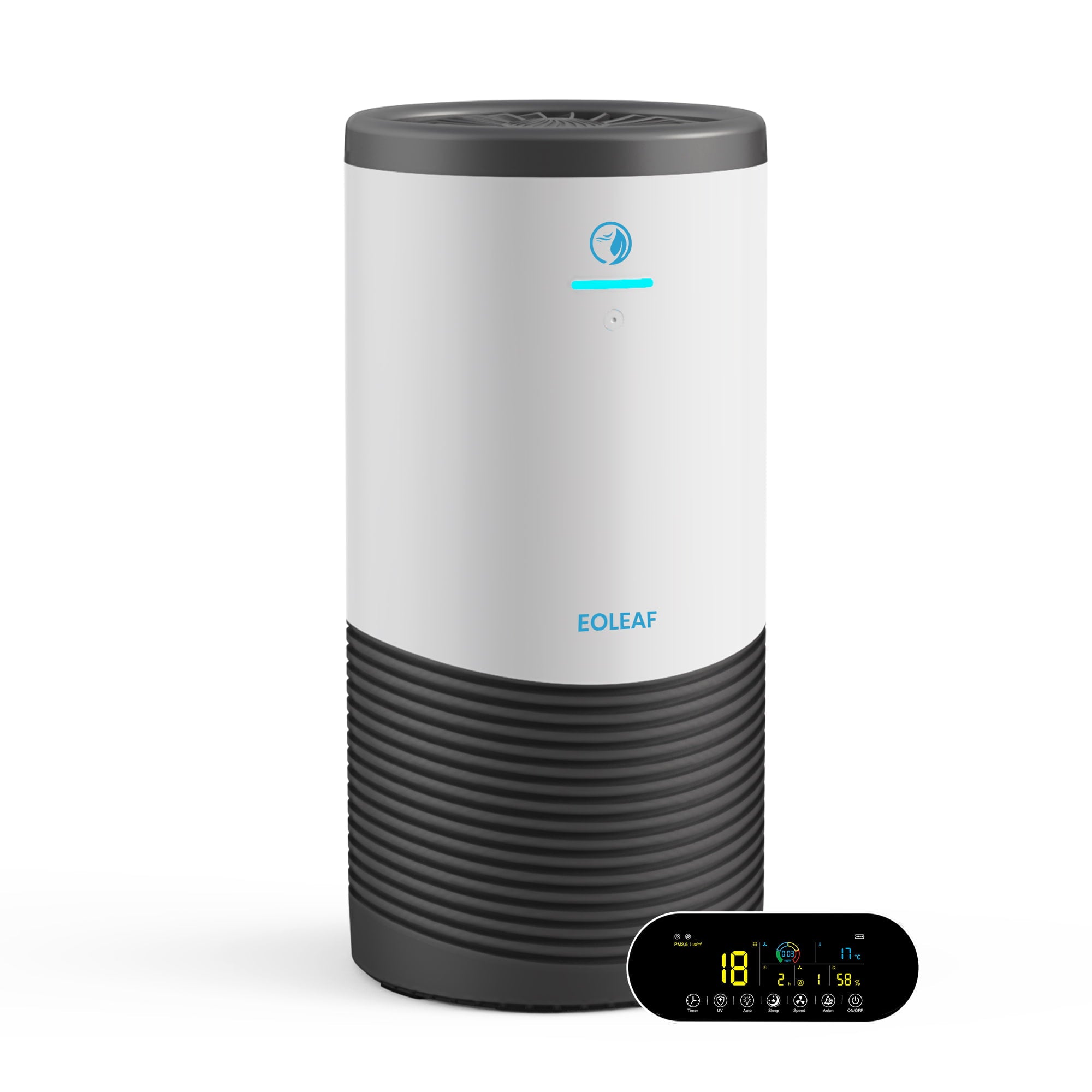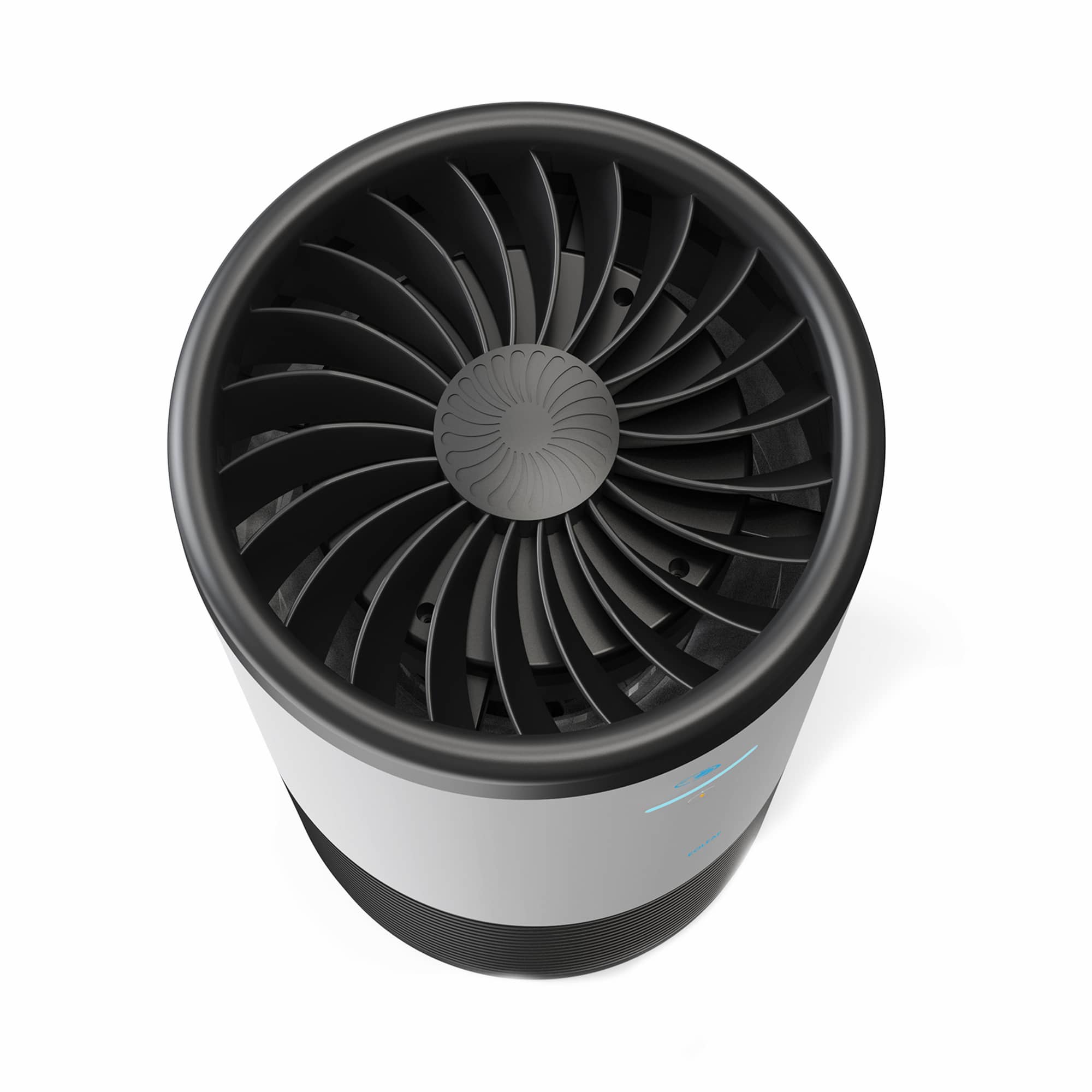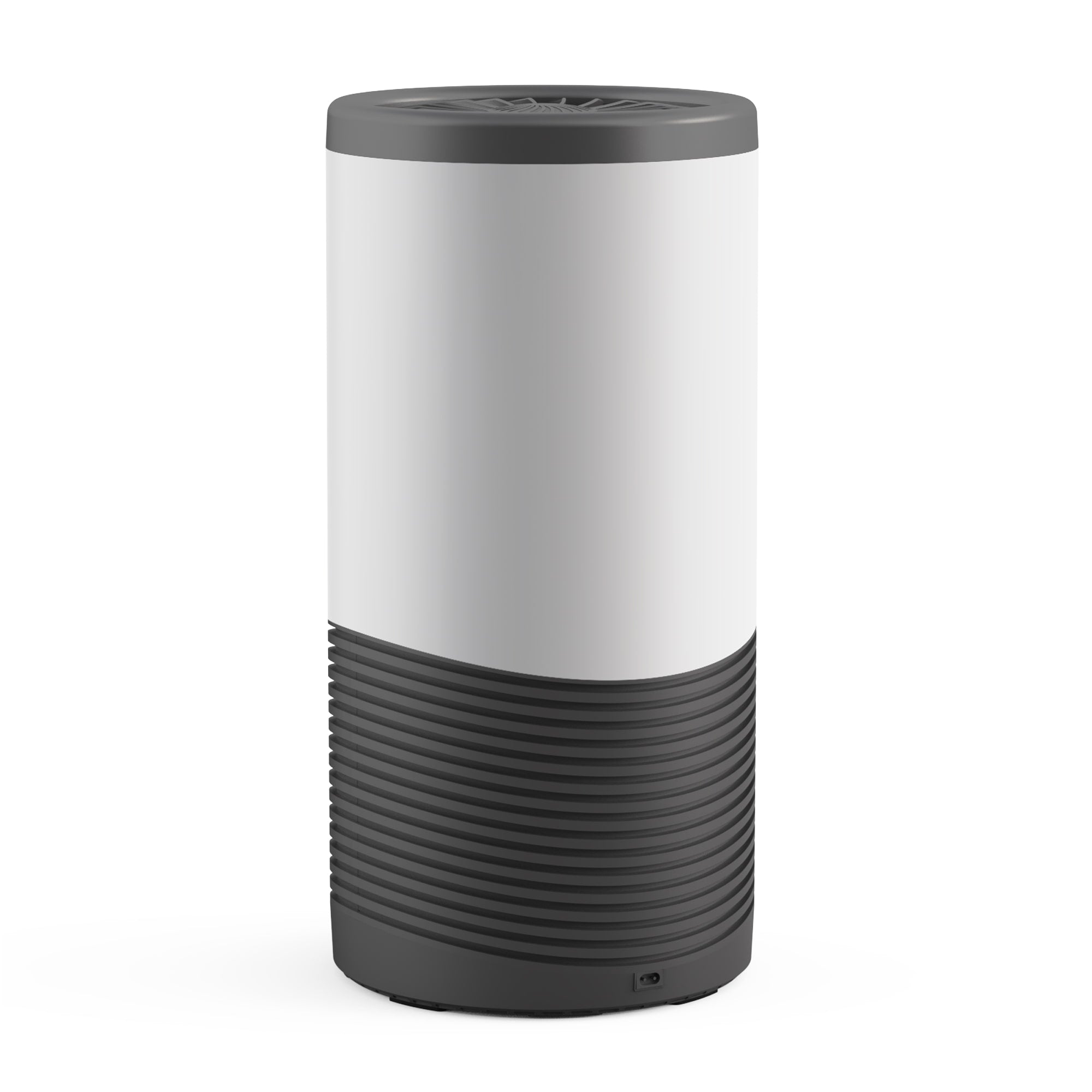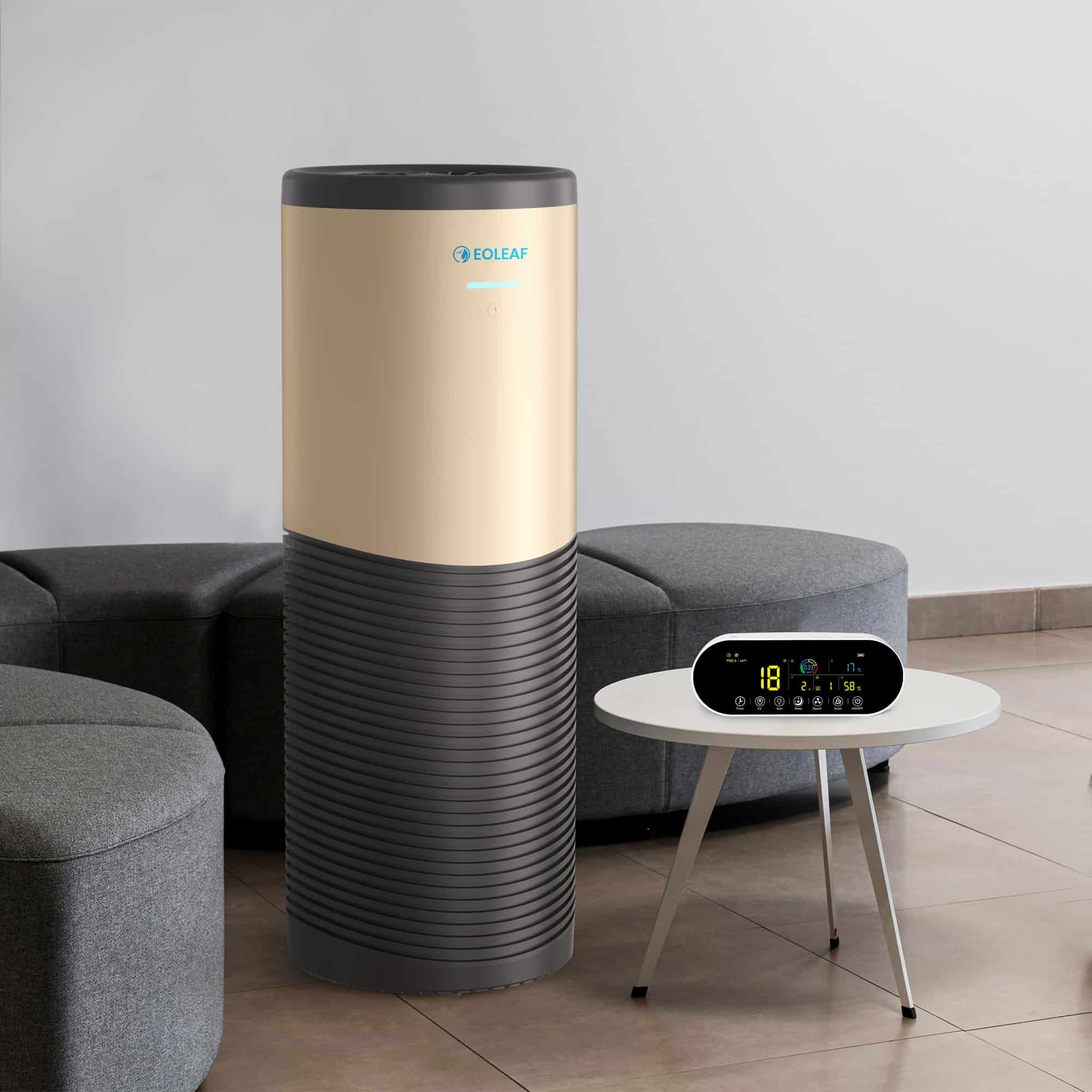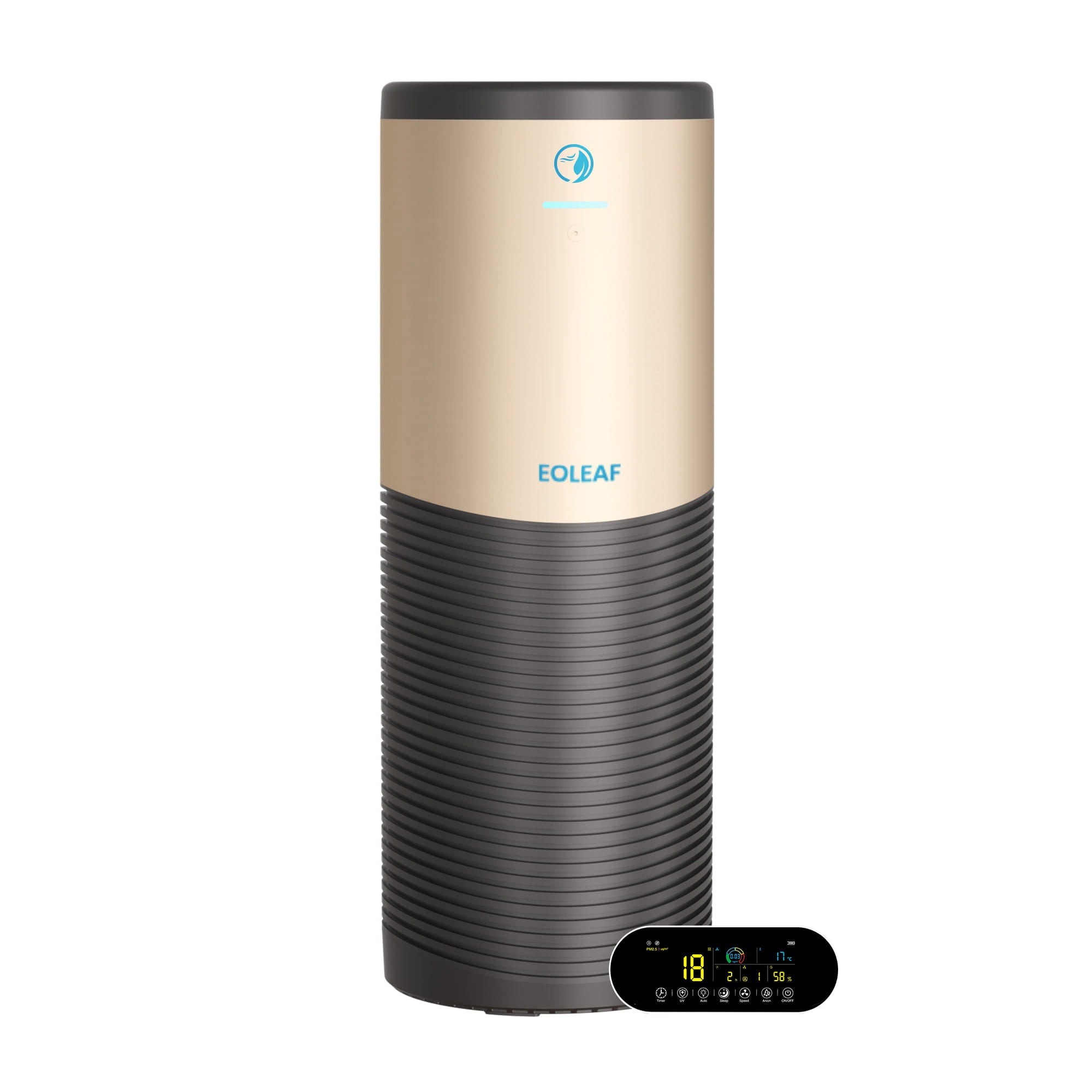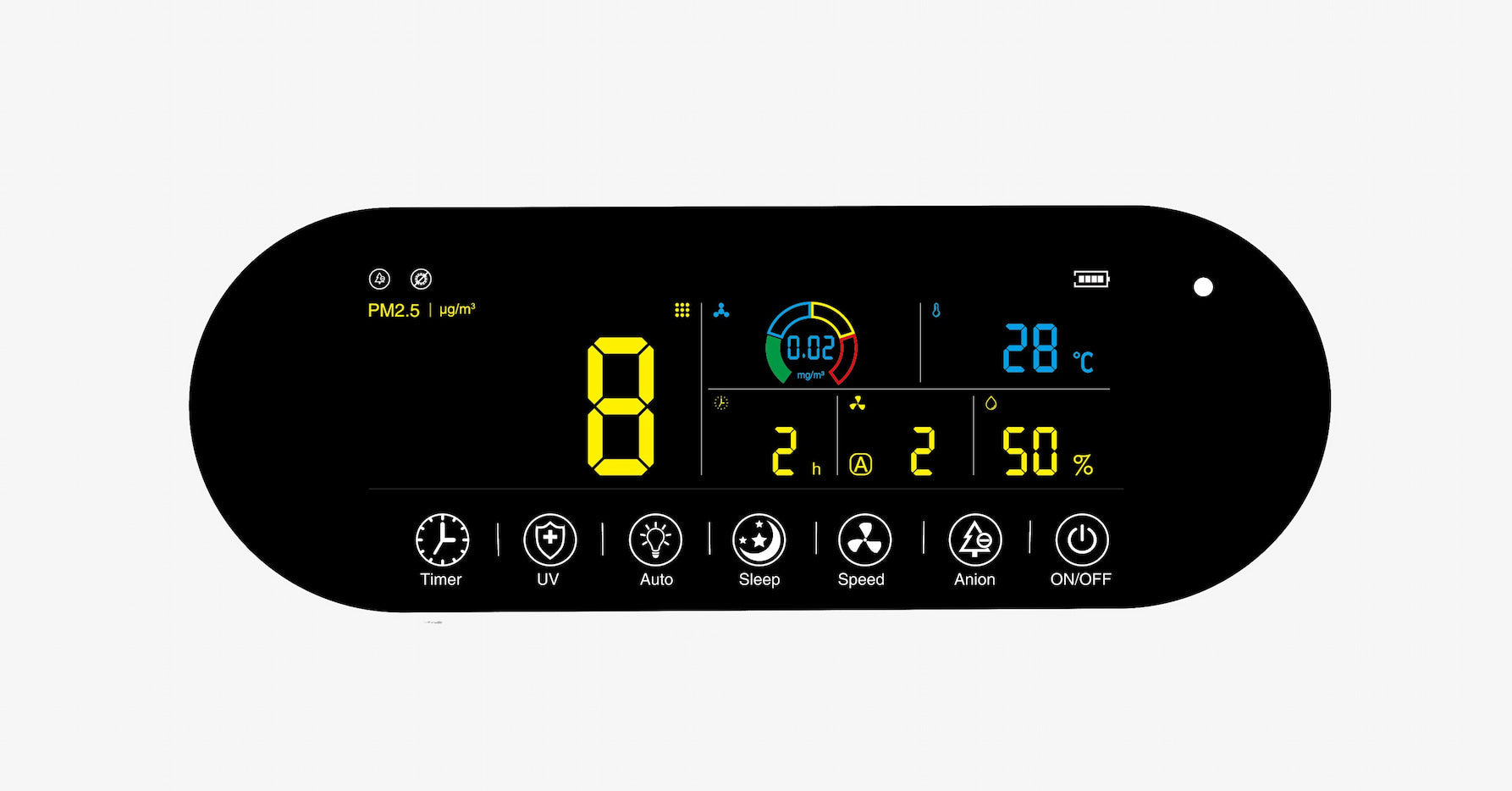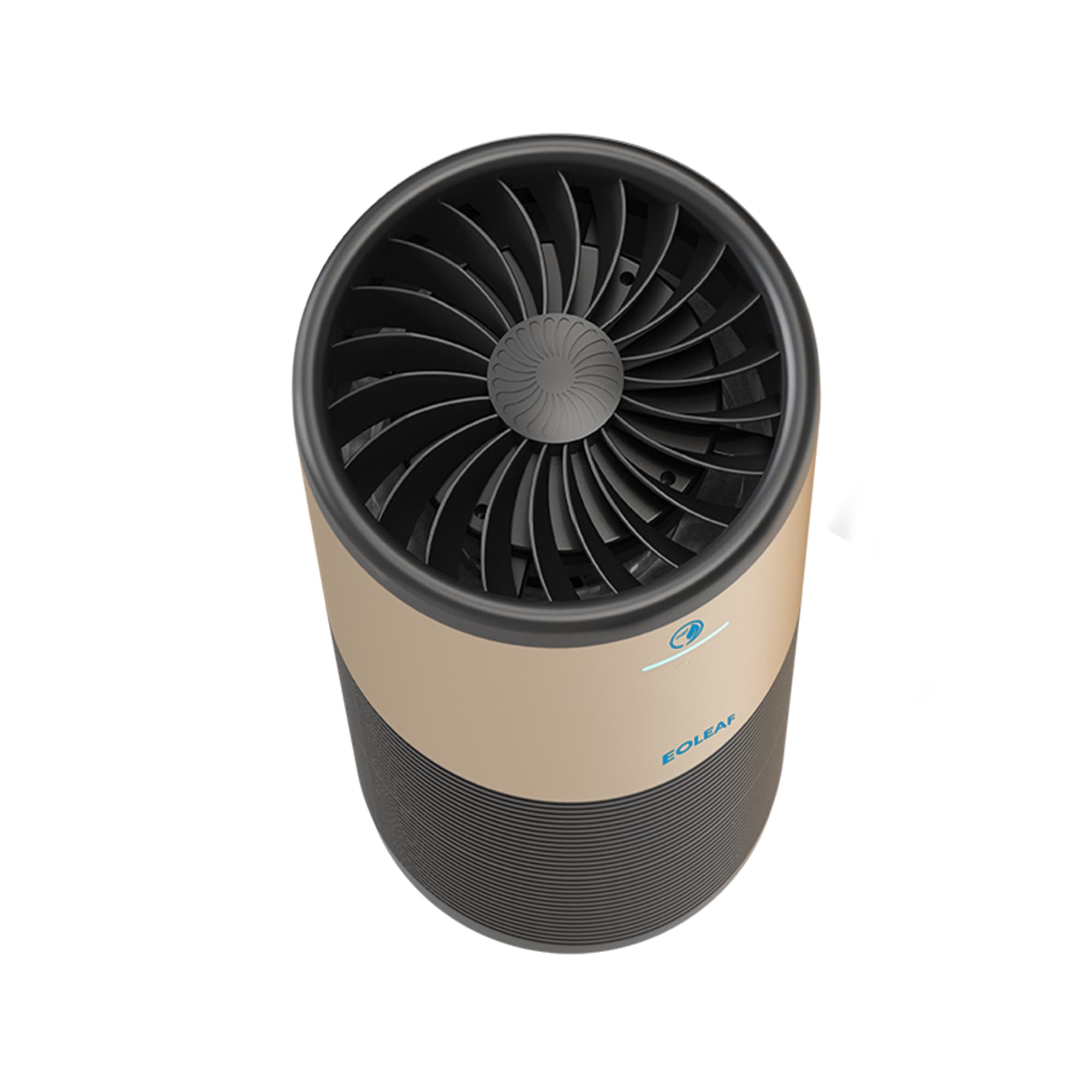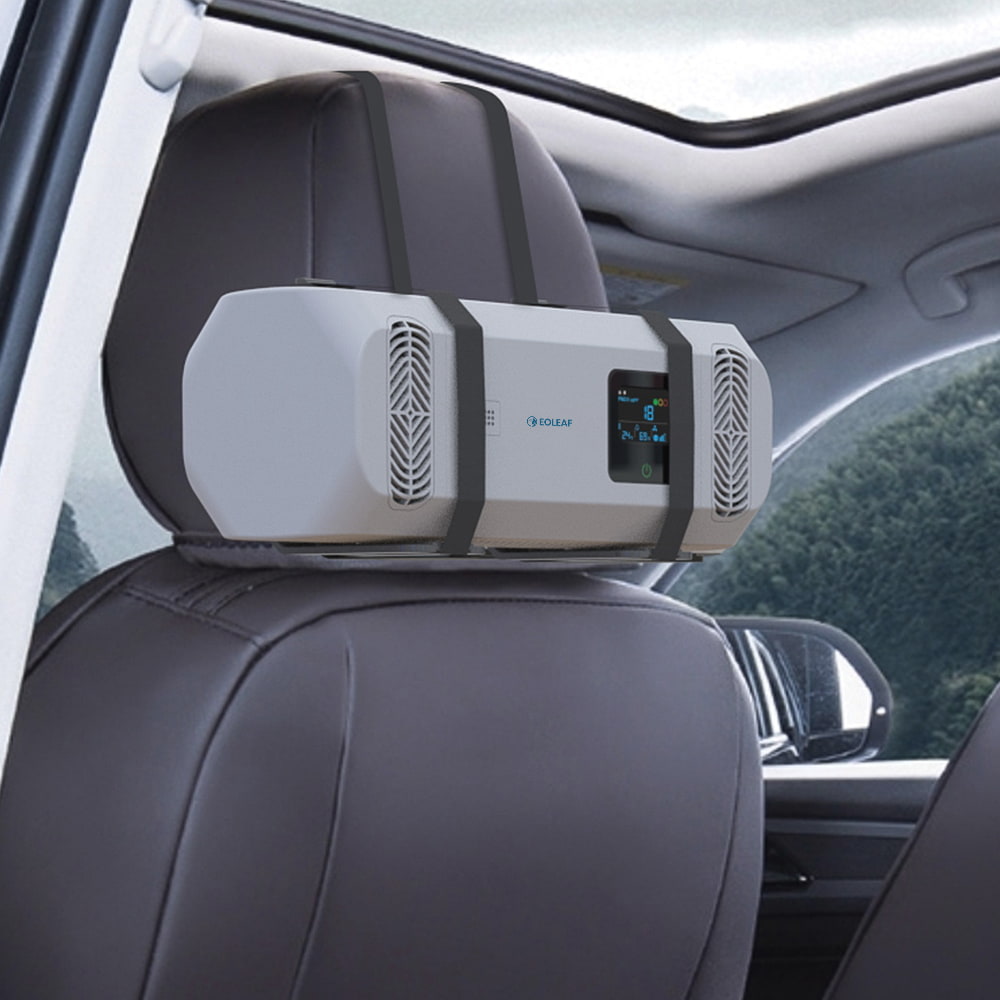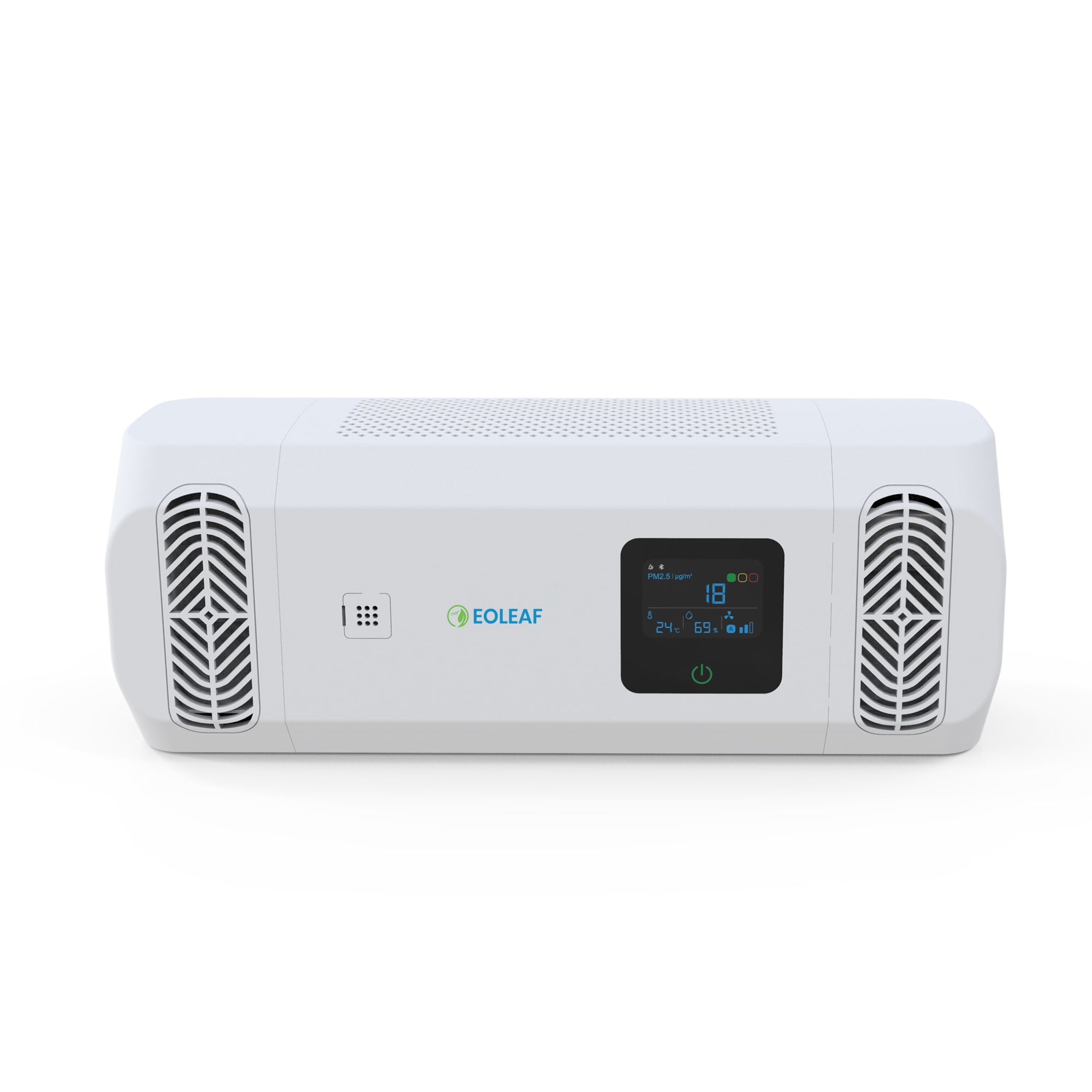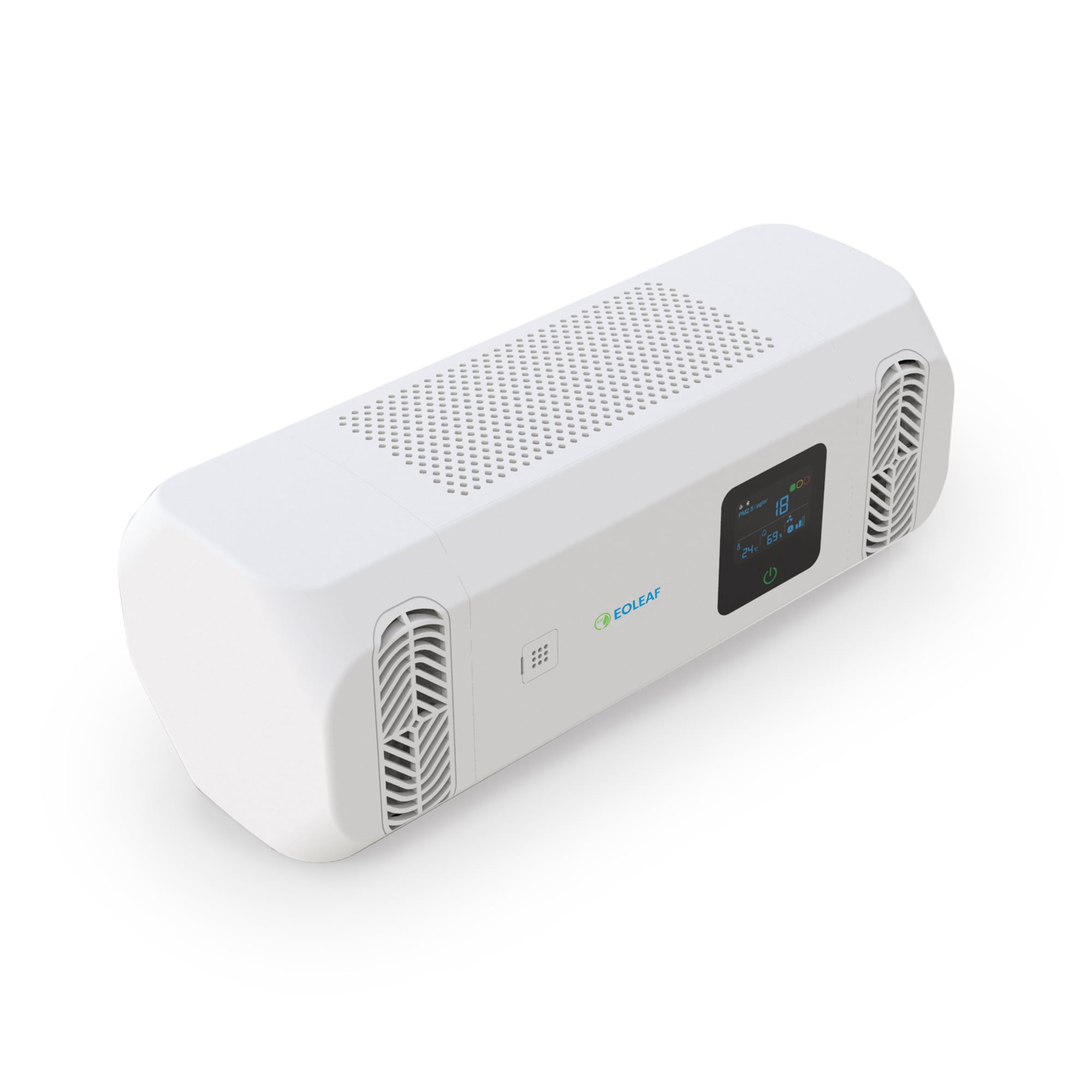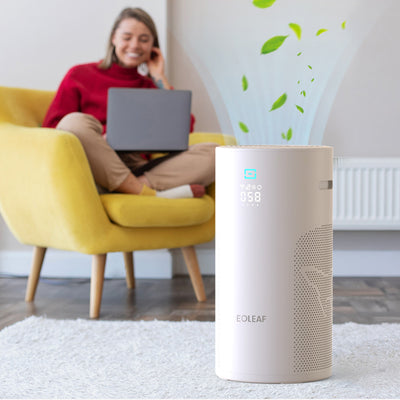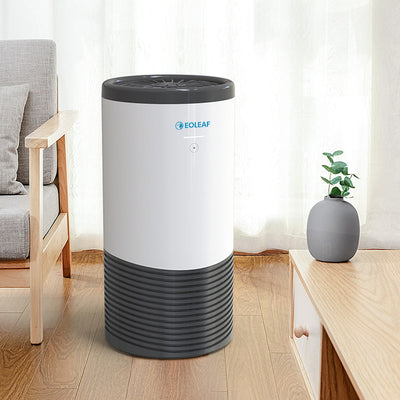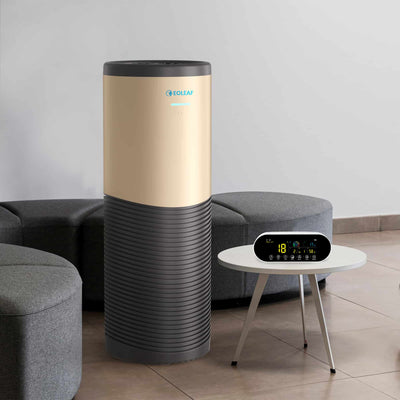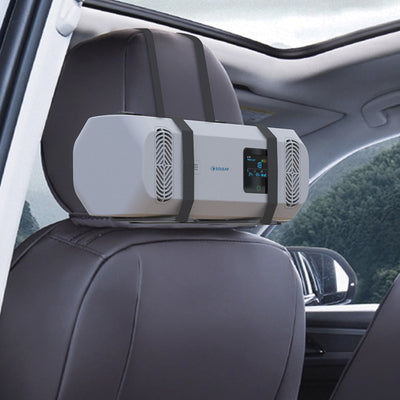Installing a CO2 sensor in your home: why and how to do it effectively?
Excess carbon dioxide (CO2) in an indoor space has long been associated with being an indicator of poor indoor air quality. However, studies are finding that elevated levels of CO2 themselves may have a negative impact on health. Installing a CO2 sensor in your home is simple and is an excellent way to give you insight into your indoor air quality. Read more to learn about why adding a CO2 sensor to your home is so important and how to install it properly in order to take advantage of its benefits.

Understanding the role of a CO2 sensor in your home
What is carbon dioxide (CO2)?
The natural processes of breathing and combustion produce carbon dioxide, a colourless and odourless gas. However, CO2 levels can quickly rise to harmful proportions and deteriorate indoor air quality in indoor settings, particularly those with inadequate ventilation. People may not be aware of this invisible threat if there is no alert, detector, or monitor in place to serve as an early warning system.
Carbon dioxide (CO2) and carbon monoxide (CO) are often confused. These gases are very distinct, even though they are both colourless, tasteless, odourless, and hazardous at high concentrations. Natural processes generate carbon dioxide, which is necessary for all life on Earth, including plant and animal life. It is also produced by industrial operations and is a greenhouse gas when released in excess. When it builds up indoors, it is hazardous because it replaces oxygen in our breathing air.
Carbon monoxide, on the other hand, is known as the ‘silent killer’. Incomplete combustion produces carbon monoxide. This indicates that carbon monoxide is created when fuels such as coal, natural gas, and wood burn partially. Carbon monoxide attaches itself to haemoglobin, a protein that helps oxygen circulate throughout the body, when it is inhaled through the lungs. Prolonged exposure to carbon monoxide can cause symptoms like headaches, dizziness, fainting, and even death. Having a carbon monoxide detector or alarm in every indoor location is always advised.
What is a CO2 sensor and what is it used for?
Detectors of carbon dioxide, often known as CO2 sensors or CO2 monitors, are used to measure concentrations of CO2 in indoor spaces. Keeping one in your home can help thwart unpleasant symptoms caused by high CO2 concentrations including fatigue, headaches, and concentration issues.
CO2 sensors are generally divided into three kinds, each of which has advantages and disadvantages:
Non-dispersive infrared (NDIR) CO2 sensors
This kind of sensor measures the amounts of CO2 in the air by using particular light wavelengths. When air enters the sensor, it turns on a light at one end that is set to a particular wavelength. A receptacle at the other end then counts how much light made it to the other end. The amount of CO2 in the air determines how much light is absorbed; the more CO2, the more light is absorbed. The Eoleaf Smart CO2 sensor uses this technology in its Smart CO2 sensor.
- Advantages: long-lasting and robust, renowned for their precision and dependability, immune to outside interference, and ideal for detecting common CO2 values (about 1000 ppm).
- Disadvantages: temperature and humidity sensitivity
Electrochemical CO2 sensors
Electrochemical CO2 monitors measure the amount of CO2 in the air by using electrical current or conductivity. The sensor undergoes electrical changes as a result of a chemical reaction that takes place when CO2 enters it. This could involve modifying the way the sensor carries an electrical current, picking up a new one, or altering an existing one. The sensor measures the amount of CO2 based on the kind and magnitude of electrical change.
- Advantages: gives a visual indicator of CO2 levels and is less susceptible to variations in temperature and humidity.
- Disadvantages: battery life and overall longevity are shorter than those of other sensors, and interference from other chemicals may occur.
Metal oxide semiconductor (MOS) sensors
The resistance (or conductivity) of metal compounds found in a metal strip of film exposed to the air is used in the last kind of carbon dioxide sensor. When the CO2 comes into contact with the strip, the electric current flowing through it reacts with the metal, changing its conductivity and causing a change that affects the CO2 concentration.
- Advantages: straightforward design
- Disadvantages: more frequently used for higher, uncommon CO2 values (>2000 ppm), sensitive to temperature and humidity

Why measure CO2 levels at home?
High levels of CO2 are indicative of poor indoor air quality. Health problems caused by high concentrations of CO2 include headaches, lightheadedness, restlessness, and, in extreme cases, asphyxiation. One crucial aspect in maintaining a healthy indoor environment is keeping an eye on CO2 levels. The most vulnerable groups include children, the elderly, pregnant women, and people with impaired immune systems, as is the case with all forms of indoor air pollution.
Naturally, scientific research frequently focuses on the risks of chemical pollution (such as volatile organic compounds, or VOCs) and fine particle pollution (from smoke and industry). According to earlier research, CO2 concentrations would need to reach 5,000 parts per million (ppm), which is extremely high, before they might endanger the health of people or animals. Nevertheless, recent research indicates that even brief exposure to CO2 levels of 1,000 ppm may have detrimental health impacts1.
In one such study, volunteers were placed in an office-like room and exposed to three 2.5-hour sessions of 600 ppm, 1,000 ppm, and 2,500 ppm of CO2. Decision-making performance showed "large and statistically significant reductions" at 2,500 ppm and "moderate and statistically significant decrements" at 1,000 ppm, according to the study2.
According to a different study, sleep quality is impacted by exposure to high CO2 levels. The study found that participants' sleep quality was "significantly reduced" when they slept in surroundings with 1,000 ppm and 1,300 ppm of CO2. Efficiency and quality of sleep declined by 1.8% and 1.3%, respectively. The amount of time spent sleeping was also reduced. This suggests that higher CO2 levels encourage the body to experience more stress and sympathetic activity3.
Yet another study demonstrated that excessive CO2 levels impair employee effectiveness. It was discovered that employees' test scores rose by 12% when CO2 levels were lower. Employee performance in one of the study's examined buildings was 60% under lower CO2 settings, taking an average of 8.2 minutes to complete tests as opposed to 13.3 minutes under higher CO2 levels4.
CO2 and air quality: a crucial issue
Both indoor and outdoor air contain carbon dioxide, and it is a natural part of life on Earth. However, it becomes a pollutant when it is emitted in large quantities and/or is allowed to accumulate.
The primary source of CO2 indoors is human respiration, or breathing, but it can also originate from cigarette smoke and unvented or inadequately vented fuel-burning devices that emit smoke.
Three primary factors determine the amount of CO2 in indoor air:
- Ventilation
- Indoor CO2 sources
- Outdoor CO2 levels5
As seen in the following graphic, it is highly recommended to invest in an air purifier in addition to a CO2 monitor for optimal indoor air quality.

Source 6
Where and how to install a CO2 sensor in your home?
The best places for a CO2 sensor
In order to harness the benefits of a CO2 sensor, it is essential to consider where in your home CO2 levels tend to be the highest. These tend to be the most heavily-trafficked rooms in the home like a living room, bedroom, kitchen, and/or a home office. Ideally, it should be installed at human height.
Mistakes to avoid when installing a CO2 sensor
A CO2 sensor should never be installed next to ventilation systems or areas with high air flow. This means placing it far from windows, doors, and/or ventilation or exhaust systems. Areas with high air flow make it difficult to get an accurate reading of CO2 concentrations in your space.
As mentioned above, a CO2 sensor should be placed at human height, no higher and no lower. Incorrect positioning may alter measurements. It is also recommended to avoid installing a carbon dioxide sensor in direct sunlight.
What are the benefits of a CO2 sensor in your daily life?
Health and well-being
Symptoms that individuals commonly experience as a result of poor indoor air quality include headaches, fatigue, sleep disorders, and respiratory irritation. Studies have shown that reducing CO2 levels and increasing ventilation indoors also leads to a reduction in dust mite concentrations that may cause allergy symptoms7. Ventilation also helps to reduce the prevalence and spread of airborne pathogens, thus decreasing the number of sick leave days required by employees8.
A CO2 sensor in your home and/or workplace is a great way to increase awareness of your indoor air quality and allow you to act in order to reduce many unpleasant symptoms and long-term risks associated with a poorly-ventilated space. The two main ways to improve indoor air quality are to improve ventilation (whether manually or mechanically) and to install a high-quality air purifier.
Improvement in productivity
Studies have shown that elevated CO2 levels play an important role in reduced productivity and cognitive abilities. Some of the results of various studies are as follows:
- The ability to perform moderately-difficult proofreading tasks declined when concentrations of CO2 increased from 600 ppm to to 3000 ppm
- Reductions in decision-making performance were observed at CO2 concentrations of just 1000 ppm
- Task performance declines significantly as CO2 concentration increases from 1500 ppm to 3000 ppm9
By installing a CO2 monitor, employees at work or those working from home may work up to 60% faster by taking action and ventilating their space when CO2 levels become too elevated10.

Preventing long-term risks
Keeping track of your CO2 levels in your indoor spaces is essential in monitoring indoor air quality in general. When levels of CO2 are too high, it may be an indicator of deeper air quality issues that impact health and well-being, such as mould and humidity. The presence of both of these indoor air pollutants severely degrades your indoor breathing air.
The best way to fully combat indoor air pollution is to ventilate regularly but also to remove the pollutants from the air with an air purifier. When used in tandem with a CO2 sensor, an air purifier provides a comprehensive method of not only understanding the status of your indoor air, but tackling problems as they come and protecting your health from its dangers.
Why pair an air purifier with your CO2 sensor?
A winning duo for cleaner air
Although a carbon dioxide sensor is an essential part of indoor air quality monitoring, it does not paint the whole picture. It only detects elevated levels of CO2 and no other type of pollutant. CO2 is only the tip of the iceberg when it comes to the various types of indoor air pollutants that you may encounter at home and at work.
This is why it is so important to equip your space with an air purifier. A high-end air purifier, like those on offer by Eoleaf, tackle and filter all types of indoor air pollution: biological pollution (germs, allergens including pollen, dust, dust mites, pet hair and dander, and mould and spores), chemical pollution (carbon monoxide, ozone, VOCs like formaldehyde and benzene), and fine particle pollution (PM10, PM2.5, PM0.1). All of these pollutants have an effect on our health and should be prevented from entering our lungs and damaging other organs of the body.
Our Eoleaf air purifiers: solutions tailored to every need
Eoleaf devices are beneficial for any type of indoor space. Whether you are looking to filter the air in a smaller space, like a bedroom, or a larger space, like a living room, our models are designed to cater to varying needs. Our NeoPur 400 is perfect for smaller spaces up to 40 m2 (450 sq ft). Our TeraPur 600 is our best all-around air purifier, ideal for spaces up to 80 m2 (850 sq ft). If power is what you need, our AltaPur 700 is great for large and professional spaces like patient rooms and reception halls up to 120 m2 (1300 sq ft). Our devices are modern, smart, and sleek, easily blending into any environment.
Our unique 8-step air purification method is built to target and remove all types of indoor air pollution. Our medical-grade HEPA H13 filter layer is third-party tested to guarantee the removal of 99.97% of air pollutants down to a size of 0.01 microns, including particulate matter like PM10, PM2.5, and PM0.1. Our devices also come equipped with a high-efficiency activated carbon filter to target VOCs and other toxic gases, as well as photocatalysis and ionisation technologies to further remove chemical pollution and fine particles. Another essential technology contained in our devices includes UVC sterilisation technologies which helps target germs and sterilise your filter once it has captured pollutants.
Using an Eoleaf air purifier alongside a CO2 sensor is a great way to have a healthy indoor environment for your family!

Regulations and maintenance of CO2 sensors
What regulations say
The World Health Organization (WHO) recommends an indoor limit of 1000 ppm for CO2 concentrations. Studies have confirmed the importance of respecting these limits in order to reduce disease spread and health impacts like reduced productivity, headaches, and fatigue11. These limits apply to both public establishments and for individual homes and spaces.
Learn more about the WHO’s guidelines for indoor air quality here.
Maintenance and lifespan of a CO2 sensor
Like air purifiers, all carbon dioxide sensors require regular maintenance in order to ensure proper functioning and accurate readings. Where air purifiers require filter changes, CO2 sensors require calibration. Without regular calibrations, CO2 monitor are subject to ‘sensor drift’ which is when the readings start to lose their accuracy by anywhere from 5 to 15 ppm. There are many types of calibration that exist for CO2 monitor, so it is crucial to refer to your device’s user manual in order to choose the right type of calibration for your model.

FAQ: all about CO2 sensors
Where should I install my CO2 sensor?
Inaccurate placement of a CO2 sensor can change measurements. Think about the areas of your house where CO2 levels are often higher when installing a CO2 sensor. Think about the areas of the house that receive the most traffic, such as the kitchen, living room, bedroom, and/or home office. Installing it at human height is ideal. Keep it away from windows, doors, and/or ventilation or exhaust systems, as well as from places with significant air flow. A CO2 sensor ought to be positioned at human height. Avoid direct sun.
How can I tell if my home is poorly ventilated?
Smell is the best indicator of inadequate ventilation in your home. Strong smells may persist longer than usual, or rooms may develop a faint, musty fragrance. But there are other techniques to find out if there is inadequate ventilation in your house such as observing for discoloured walls or grout, rooms with varying temperatures, and the development of rust, condensation, and/or humidity.
Can I connect my sensor to a mobile app?
All Eoleaf devices are Wi-Fi capable and connect to the Tuya Smart app, which is compatible with both iOS and Android. Using the app, you may monitor the quality of the air inside your home and operate your CO2 sensor remotely. The Tuya Smart app also allows you to record your own statistics over a year and obtain outside air quality data for your city.
Do CO2 sensors detect other pollutants?
No. A CO2 sensor only detects CO2 concentrations, no other pollutants. This is why it is important to install a CO2 sensor alongside a high-end air purifier, like Eoleaf’s, that will detect fine particulate matter and chemical pollution (VOCs) concentrations as well.
Sources
1 Davis, N. (2019, July 8). Indoor carbon dioxide levels could be a health hazard, scientists warn. The Guardian. https://www.theguardian.com/environment/2019/jul/08/indoor-carbon-dioxide-levels-could-be-a-health-hazard-scientists-warn
2 Satish U, Mendell MJ, Shekhar K, Hotchi T, Sullivan D, Streufert S, Fisk WJ. Is CO2 an indoor pollutant? Direct effects of low-to-moderate CO2 concentrations on human decision-making performance. Environ Health Perspect. 2012 Dec;120(12):1671-7. doi: 10.1289/ehp.1104789. Epub 2012 Sep 20. PMID: 23008272; PMCID: PMC3548274.
3 Kang, M., Yan, Y., Guo, C., Liu, Y., Fan, X., Wargocki, P., & Lan, L. (2024). Ventilation causing an average CO2 concentration of 1,000 ppm negatively affects sleep: A field-lab study on healthy young people. Building and Environment, 249, 111118. doi:10.1016/j.buildenv.2023.111118
4 Study reveals C02 levels in offices are ‘silently damaging UK productivity.’ Work in Mind. (2018, May 12). https://workinmind.org/2018/12/05/study-reveals-c02-levels-in-offices-are-silently-damaging-uk-productivity/
5 Government of Canada. Canada.ca. (2021, March 19). https://www.canada.ca/en/health-canada/services/publications/healthy-living/carbon-dioxide-home.html
6 Centers for Disease Control and Prevention. (2023, April 13). Improving ventilation in your home. Centers for Disease Control and Prevention. https://www.cdc.gov/coronavirus/2019-ncov/prevent-getting-sick/improving-ventilation-home.html
7 Wargocki, P. (2013). The effects of ventilation in homes on health. International Journal of Ventilation, 12(2), 101–118. doi.org/10.1080/14733315.2013.11684005
8 Seppänen OA, Fisk WJ. Summary of human responses to ventilation. Indoor Air. 2004;14 Suppl 7:102-18. doi: 10.1111/j.1600-0668.2004.00279.x. PMID: 15330778.
9 Zhang, J., Pang, L., Cao, X., Wanyan, X., Wang, X., Liang, J., & Zhang, L. (2020). The effects of elevated carbon dioxide concentration and mental workload on task performance in an enclosed environmental chamber. Building and Environment, 178, 106938. doi.org/10.1016/j.buildenv.2020.106938
10 Carbon dioxide (CO2) and employee productivity: All you need to know. Disruptive Technologies. (n.d.). https://www.disruptive-technologies.com/explore/carbon-dioxide-co2-employee-productivity
11 Mendell, M.J., Chen, W., Ranasinghe, D.R. et al. Carbon dioxide guidelines for indoor air quality: a review. J Expo Sci Environ Epidemiol 34, 555–569 (2024). https://doi.org/10.1038/s41370-024-00694-7
Eoleaf's range of air purifiers
NeoPur 400 air purifier
40 m² (450 sq ft) coverage area - Smart & Connected
TeraPur 600 air purifier
80 m² (850 sq ft) coverage area - Ultimate all-in-one
AltaPur 700 air purifier
120 m² (1300 sq ft) coverage area - Professional model
PurCar air purifier
HEPA H13 Filter & Ioniser - For all vehicles

